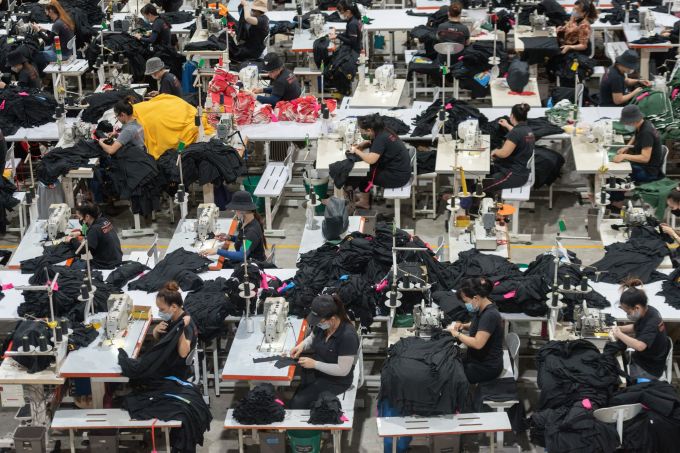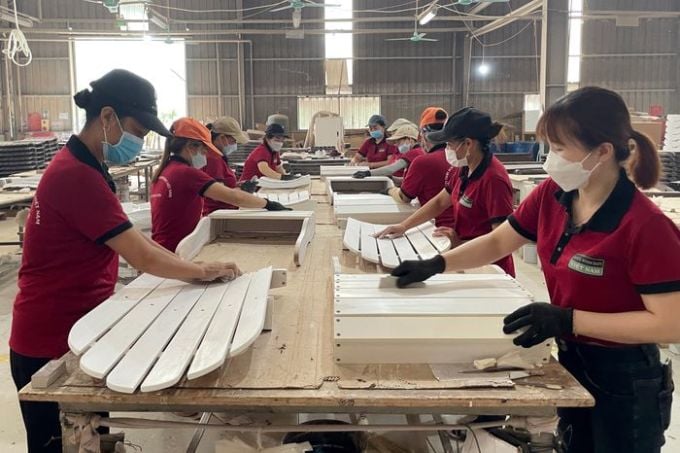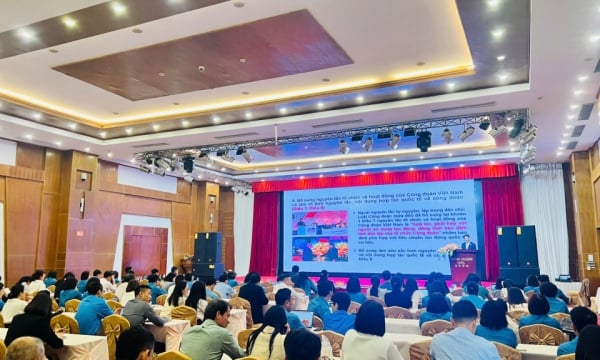With a rapidly aging population and more educated young people reluctant to enter factories, the era of super-cheap Asian workers is fading.
The office has floor-to-ceiling windows, a cafe serving matcha tea, and free yoga and dance classes. Workers gather monthly for team-building events to drink beer, go go-karting, and go bowling. That’s not a Google workplace, but a garment factory in Vietnam.
Asia, the world’s factory, is seeing a new trend: young people are generally reluctant to work in factories. That’s why manufacturers are trying to create more attractive working environments. This is also ringing a bell with Western companies that rely on the region’s cheap labor to make cheap consumer goods.
The twilight of cheap labor in Asia is coming, testing the globalized manufacturing model that has helped feed the world with cheap goods for the past three decades. Americans accustomed to affordable fashion and flat-screen TVs may soon have to reckon with higher prices, according to the WSJ .

Workers work at the UnAvailable factory in Ho Chi Minh City. Photo: WSJ
Paul Norriss, co-founder of Ho Chi Minh City-based tailoring company UnAvailable, says there is no place on the planet that can deliver what you want. “People will have to change their consumption habits, and so will brands,” he says.
Norriss said workers in their 20s—the traditional workforce in the garment industry—often stay a few years and then leave. He hopes that improving the work environment can help. “Everyone wants to be an Instagrammer, a photographer, a stylist, or work in a coffee shop,” he said.
To cope with the labor crunch, Asian factories have had to raise wages and adopt sometimes costly strategies to retain workers, from improving the quality of meals to building kindergartens for workers' children.
Toymaker Hasbro says labor shortages in Vietnam and China have pushed up costs. Barbie maker Mattel, which has a large manufacturing base in Asia, is also grappling with higher labor costs. Both companies have raised prices. Nike, which makes most of its shoes in Asia, says its prices have risen because of higher labor costs.
Manoj Pradhan, an economist in London, warned that American consumers who have grown accustomed to relatively stable prices relative to their disposable incomes will have to think again. "There is a big demographic reversal," he said.
Beginning in the 1990s, China and then other Asian manufacturing hubs became integrated into the global economy. Countries with an image of poor farmers became manufacturing powerhouses. Durable goods like refrigerators and sofas became cheaper.
But now those countries face a generational problem. Younger, better-educated workers familiar with Instagram and TikTok are deciding that life and work don’t have to take place within factory walls.
Another demographic shift is also playing a role. Young people in Asia are having fewer children and at a later age, which means they are less pressured to have a steady income in their 20s. A booming service sector offers less grueling work options, such as shopping mall clerks and hotel receptionists.
The problem is acute in China, where urban youth unemployment hit 21% in June despite factory shortages. Multinational companies have been shifting production from China to countries such as Malaysia, Indonesia, Vietnam and India. But factory owners there say they are also struggling to attract young workers.

Yoga class for UnAvailable workers in Ho Chi Minh City. Photo: WSJ
Factory wages in Vietnam have more than doubled since 2011 to $320 a month, three times the rate in the U.S., according to data from the U.N.’s International Labor Organization. In China, factory wages rose 122% from 2012 to 2021.
Earlier this year, Nguyen Anh Tuan, a 25-year-old high school graduate, quit his job as a mechanic at an auto parts manufacturer on the outskirts of Hanoi to drive for Grab. He drives passengers for less per hour than he would earn at the factory, but says the change is worth it because he is his own boss.
“The supervisors often spoke harshly, which made me very stressed,” Tuan said of his three years at the factory. He said he would only consider returning to the factory if his previous salary of $400 a month was doubled.
To get cheap labor, manufacturers used to simply move to less expensive locations. But that is no longer so easy. There are countries in Africa and South Asia that have large labor forces, but are politically unstable, or lack good infrastructure and a trained workforce.
For example, clothing brands have struggled to expand into Myanmar and Ethiopia, only to have operations disrupted by political unrest. Bangladesh was once a reliable destination for clothing manufacturing, but restrictive trade policies and congested ports have limited its appeal.
India has a huge population, and companies are looking to it as an alternative to China. But even in India, factory managers are beginning to complain about the difficulty of retaining young workers. Many young people prefer farm life, supported by state welfare programs, or freelance work in cities to living in factory dormitories. Trained engineers are leaving factories to join the information technology industry.
Asian factory owners are trying to make the jobs more attractive, including subsidizing kindergartens and funding technical training programs. Some are moving factories to rural areas, where people are more willing to do manual labor. But that puts them farther from ports and suppliers, and forces them to adapt to rural life, including absenteeism during harvest season.
Christina Chen, the Taiwanese owner of furniture maker Acacia Woodcraft Vietnam, moved her factory out of southern China four years ago in the hope of easier recruitment. She initially considered industrial parks near Ho Chi Minh City but heard warnings about high turnover and skyrocketing wages.
So she chose rural northern Vietnam. Her workers are now typically in their 40s and 50s, and some can’t read well. That requires explaining tasks verbally and using visual demonstrations. But her workforce is more stable.
Christina Chen values her young employees. She invites them into decision-making, meets with visiting American buyers, and shares photos of the company’s furniture in U.S. stores. Automation is part of the equation, she says, but human ingenuity is still needed for many tasks.

Workers at Acacia Woodcraft Vietnam. Photo provided by the company.
In Asia, the labor landscape is much different than it was two decades ago. In 2001, Nike reported that more than 80 percent of its workers were Asian, and the typical worker was 22 years old, single, and grew up in a farming family. Today, the average age of a Nike worker in China is 40 and in Vietnam is 31, in part because Asian countries are aging rapidly.
Maxport Limited Vietnam, a Nike supplier founded in 1995, has seen competition for workers intensify. Now it has to work to improve the working environment, with factory windows flooded with sunlight and thousands of trees surrounding it. Young workers are trained to advance.
But they still struggle to attract young people. Senior compliance officer Do Thi Thuy Huong said a training program for high school graduates has ended in part because so few of them accept jobs afterward. About 90% of Maxport’s workers are 30 or older.
In Malaysia, factories are dropping uniform requirements — which young workers hate — and redesigning their workspaces. Syed Hussain Syed Husman, president of the Malaysian Employers Federation, which represents manufacturers, said companies are trying to make factories more attractive, including expanding partitions, using more glass, providing natural light and music in an Apple-style office environment.
Susi Susanti, 29, from Indonesia, tried working in a factory after graduating from high school. But she hated being pressured by managers to work faster. She told her mother she had to do something else.
After a six-month training course, she spoke basic Mandarin and began caring for an elderly couple in Taiwan. The salary was three times higher than what she had earned working in factories back home, and it made her less tired. “When the person I was caring for got better, I could relax,” Susi said.
Phien An ( according to WSJ )
Source link


![[Photo] Looking back at the impressive moments of the Vietnamese rescue team in Myanmar](https://vstatic.vietnam.vn/vietnam/resource/IMAGE/2025/4/11/5623ca902a934e19b604c718265249d0)



![[Photo] "Beauties" participate in the parade rehearsal at Bien Hoa airport](https://vstatic.vietnam.vn/vietnam/resource/IMAGE/2025/4/11/155502af3384431e918de0e2e585d13a)



























![[Photo] Summary of parade practice in preparation for the April 30th celebration](https://vstatic.vietnam.vn/vietnam/resource/IMAGE/2025/4/11/78cfee0f2cc045b387ff1a4362b5950f)




























































Comment (0)